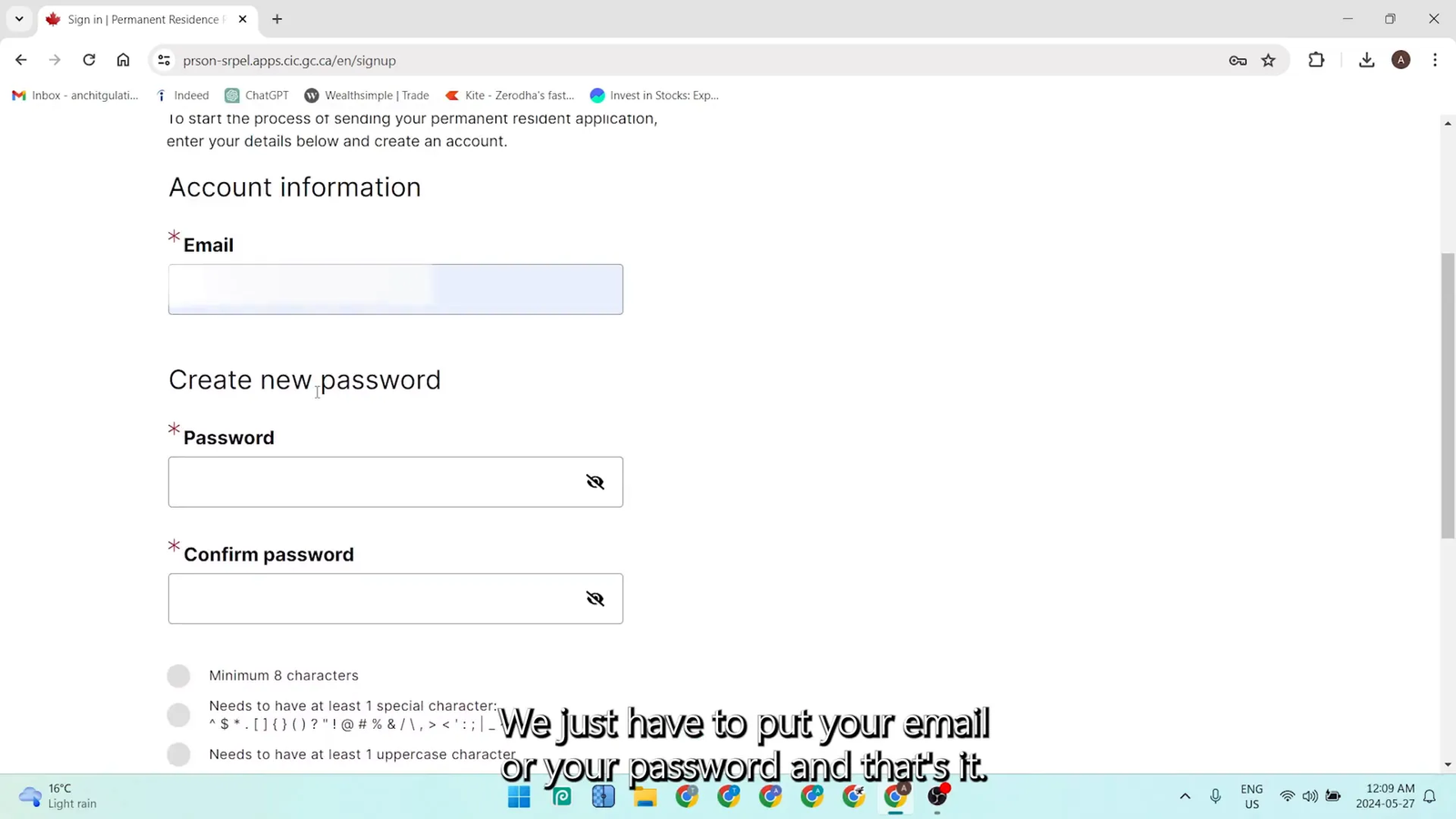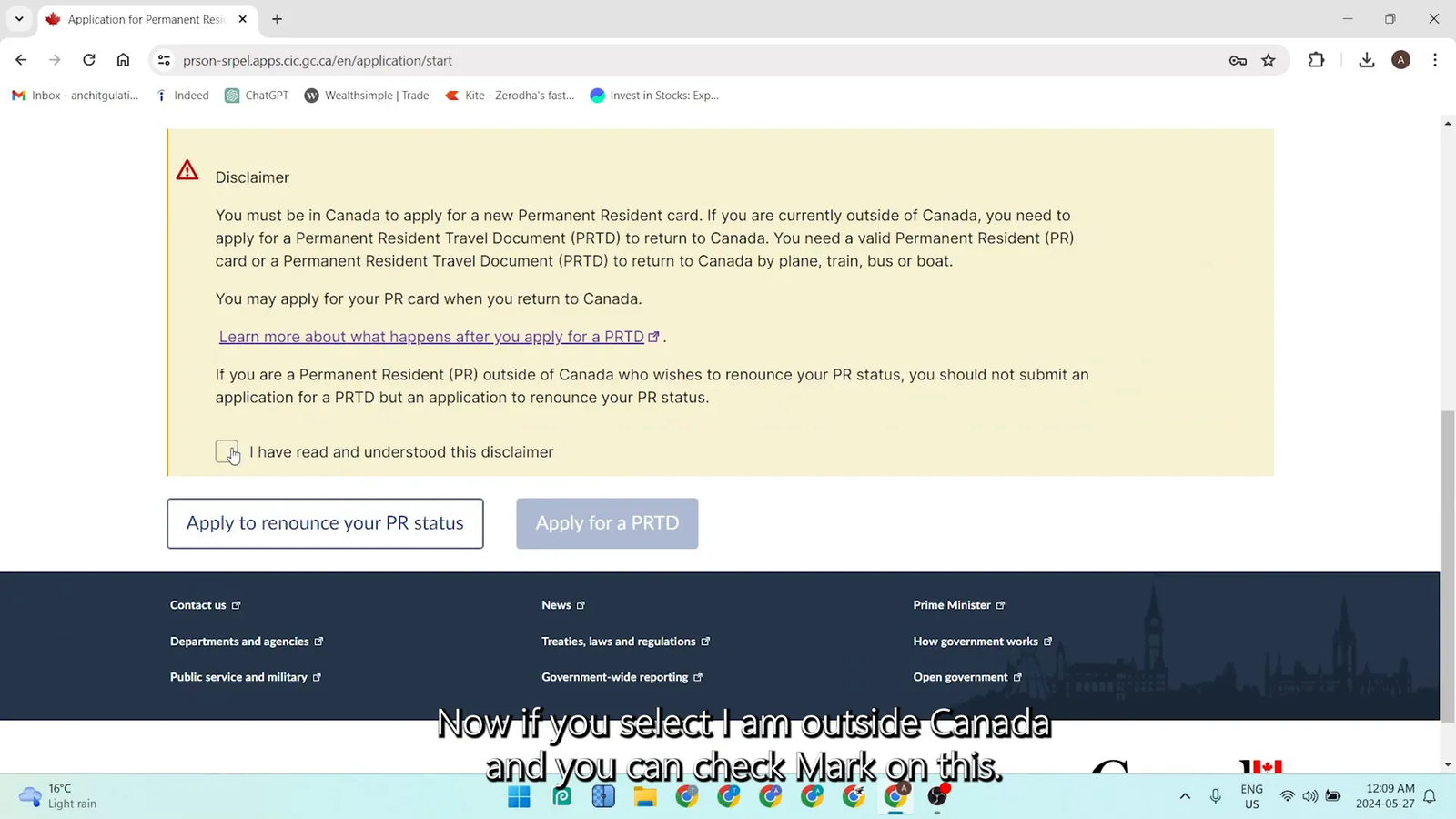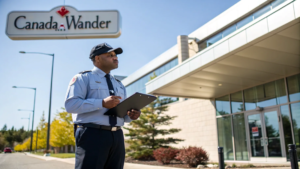
If you’re a permanent resident living outside Canada and don’t have a valid PR card but need to travel back to Canada, you might be wondering how to apply for the Permanent Resident Travel Document (PRTD). I’ve got you covered with a simple, step-by-step guide on how to get your PRTD sorted quickly and smoothly.
This guide walks you through everything—from creating an account on the government portal and filling out the necessary forms to uploading your documents and making the payment. Let’s dive right in!

Table of Contents
- What Is a Permanent Resident Travel Document (PRTD)?
- Step 1: Access the Permanent Residence Portal and Create an Account
- Step 2: Select the Correct Program and Situation
- Step 3: Start Your PRTD Application
- Step 4: Review the Document Checklist (IMM 5644)
- Step 5: Upload Your Documents
- Step 6: Pay the Application Fee
- Step 7: Final Review and Submit
- What to Expect After Submission
- FAQs About Applying for a PRTD
- Final Tips
What Is a Permanent Resident Travel Document (PRTD)?
A PRTD is a document you need if you’re a permanent resident of Canada but are currently outside the country without a valid PR card. It allows you to travel back to Canada by commercial transport like planes, trains, boats, or buses. It’s important to note that you can only apply for a PRTD if you are outside Canada. If you are inside Canada, you need to apply for a PR card instead.
Step 1: Access the Permanent Residence Portal and Create an Account
First things first, head over to the Permanent Residence Portal. This is where all the magic happens.
Click on “Create Account.” Don’t worry, it’s super straightforward. Just enter your email, set a password, and you’re good to go. I already had an account, so I just signed in.
Step 2: Select the Correct Program and Situation
Once you’re logged in, you’ll be asked to select the program you’re applying under. Choose PR Travel Document (PRTD). Then, select your situation carefully:
- If you are inside Canada, you cannot apply for a PRTD. The system will direct you to apply for a PR card instead.
- If you are outside Canada, you can proceed with your PRTD application.
Make sure to select “I am outside Canada” to continue your application for a PRTD.
Step 3: Start Your PRTD Application
Click on “Apply for PRTD” to begin your application. The first question is whether your request is urgent. If you have an emergency — like a serious illness in the family or an urgent travel need — select “Yes” and provide the date of travel along with the reason. If not, just select “No.”
Filling Out the PRTD Application Form (IMM 5444)
The next big step is to fill out the official application form IMM 5444. You’ll download the form from the portal, and here’s what you need to include:
- Confirm that you are applying from outside Canada.
- Select your reason for applying (e.g., you don’t have a valid PR card).
- Enter your UCI (Unique Client Identifier) number.
- Choose your preferred language for correspondence (English or French).
- Enter the date you became a permanent resident (your EOP date—Electronic Confirmation of Permanent Residency).
- Provide the place where you became a permanent resident, including your port of entry or province.
- Fill in your personal details: full name, any other current names, gender, date of birth, place of birth, and citizenship(s).
- Provide your current address outside Canada along with your contact numbers and email address.
- Answer questions about your immigration history, such as whether you’ve ever had a removal order, lost your PR status, or submitted an appeal.
- Give a detailed personal, address, work, and education history for the past five years (or since becoming a PR if less than five years).
- Answer questions about your travel history and reasons for absences from Canada.
- Provide details about your spouse or common-law partner, if applicable.
- Agree to the disclosure information and sign and date the form.
Filling out this form might seem a bit time-consuming, but accuracy is key here!
Step 4: Review the Document Checklist (IMM 5644)
Next, download and carefully review the document checklist IMM 5644. This checklist tells you exactly what documents you need to upload with your application.
Here’s what you typically need to include:
- A completed and signed application form IMM 5444.
- Copies of all pages of your current and previous passports from the past five years, including all stamps.
- Any additional supporting documents, such as a marriage certificate if you’re traveling with a spouse.
- If applicable, authorization letters for minors traveling.
- Proof that you meet residency obligations (optional but helpful if you want to show you have been living in Canada).
- Payment receipt for the application fee.
If your country has specific requirements, there will be a link on the portal to check those. Otherwise, just follow the general checklist.
Step 5: Upload Your Documents
After filling out all forms and gathering your documents, upload them to the portal. You’ll be prompted to upload:
- Your completed IMM 5644 document checklist.
- Your filled and signed IMM 5444 application form.
- Photocopies of your current and past passports.
- Any other supporting documents like marriage certificates or proof of residency.
- Letter of explanation or travel logs if you have them, especially if your request is urgent.
Make sure everything is clear and legible to avoid delays.
Step 6: Pay the Application Fee
The fee for the PRTD is $50. To pay, click on the online payment link provided in the portal. Select “Permanent Resident Card and Permanent Resident Travel Document Fees,” choose the correct fee, and then proceed to log in and pay.
Once payment is made, save your receipt and upload it as proof of payment in your application.
Step 7: Final Review and Submit
Before submitting, double-check that you have:
- Filled out all forms correctly.
- Uploaded all required documents and proof of payment.
- Signed the application and agreed to the consent and declaration.
Once you’re sure everything is complete, submit your application.
What to Expect After Submission
I applied from Bangladesh, and it took about one week to get a response since I marked my request as urgent and provided supporting documents like travel tickets and a letter explaining my emergency situation.
After approval, it took about another week to get my passport stamped with the PRTD. So, in total, it was a three-week process from application to receiving the stamped passport.
Keep in mind that processing times can vary depending on your country and situation.
FAQs About Applying for a PRTD
Q: Can I apply for a PRTD if I am in Canada?
A: No, the PRTD is only for permanent residents outside Canada without a valid PR card. If you are inside Canada, you must apply for a PR card instead.
Q: How long does it take to process a PRTD application?
A: Processing times vary, but in my experience, it took about two weeks for an urgent request and an additional week for passport stamping.
Q: What documents do I need to upload?
A: You need a completed and signed application form IMM 5444, copies of all relevant passports with stamps from the last five years, proof of payment, and any supporting documents like marriage certificates or letters of explanation.
Q: Can I pay the application fee online?
A: Yes, the $50 fee can be paid online through the government portal, and you must upload the payment receipt with your application.
Q: What if my situation is urgent?
A: You can mark your application as urgent and provide reasons such as serious illness or family emergencies, along with travel dates and supporting documents, to speed up processing.
Final Tips
Applying for a PRTD may seem daunting at first, but by following these steps carefully, you’ll breeze through it. Be honest and thorough in your application, make sure your documents are clear, and always save your payment receipts.
If you’re traveling with minors or spouses, don’t forget to include the necessary authorizations and supporting documents.
And lastly, if you’re unsure or need professional help, always reach out to licensed immigration consultants. This guide is meant to help you understand the process but is not a substitute for professional advice.
Good luck with your application, and safe travels back to Canada!












